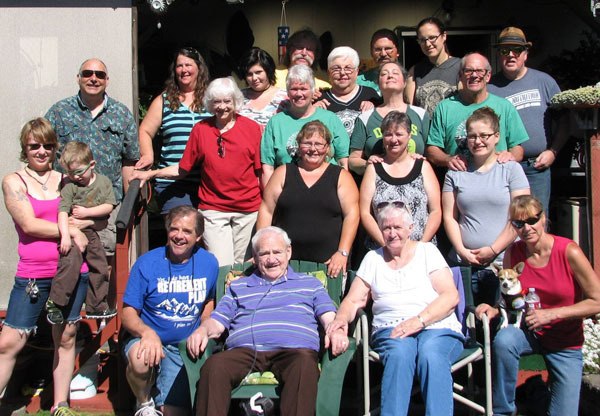Members set goals to experience more public activities
by PATRICIA MORRISON COATE
Sequim Gazette
People who are deaf have a lot to talk about and what better way to share stories, discuss current events and be visible in the hearing world than to organize activities and social events.
Since 2008 when it began at The Buzz, the Sequim Deaf Coffee House has been an outlet for conversation. However, this summer SDCH founders Michele Mangiantini, Gerilee Gustason and Diane Dickson, plus Karen Pederson of Port Angeles, decided to go for a fresh start and create a new group.
“It was important to us that our name define who we are. We decided that our name would be ‘Deaf Events and Friends – Olympic Peninsula’ or DEAFOP for short,” said Mangiantini. “Our goals are to get out and experience new things, attend events, as well as visit our fellow neighboring deaf communities. We wanted to make sure to include people from all over the Olympic Peninsula, not just limit ourselves by having a city in our name. We opened it up to ‘friends’ so as not to limit our group to just deaf persons.”
The women decided that to keep things interesting they needed to have more group interaction in monthly events; to have individuals from the group plan a monthly activity that they would like to share.
“Each member has special interests and hobbies or have experienced something that they might want to have others experience,” Mangiantini said. “Thinking it is a great way to get to know our friends and the ideas are endless, we are hoping to create some new friends and experience some things that we might not otherwise have experienced. Attendance is not required so people can feel free to attend when they want without judgment to a particular activity. For now we are asking the DEAFOP group to start providing their ideas for activities and between the four of us leaders, we have a handful of ideas for activities in mind to keep the group busy, Mangiantini said.
In September the group had its kick-off picnic hosted by Karen and Robert Pederson at their home in Port Angeles. On Oct. 11, about a dozen DEAFOP members met at the Crab Festival’s Crab Central as an informal gathering of friends to share conversation and crab.
On Nov. 17 DEAFOP will be helping/serving the Port Angeles Food Bank as a Thanksgiving group function. In December, members plan to caravan to Bremerton to see an ASL presentation of “Shrek” and in January, Dickson will host a card making class for the ladies while her husband John will host the men in conversation and a game of darts at their home in the Deer Park area.
The women arrived to the world of deafness in several different ways, also typical of the deaf community. Gustason, a former sign language teacher at Peninsula College, became deaf after a childhood bout of meningitis; Dickson was born hard of hearing and became deaf after multiple colds affected her ears, and Pederson was born deaf.
“I had the chicken pox and the mumps in a very short time period when I was a young child so I grew up ‘hard of hearing.’ I gradually lost all of my hearing by age 40,” said Mangiantini, who’s now 52. She met and married her hearing husband, Dean, and they live in Port Angeles.
“My husband and I learned sign language starting at Bellevue Community College for one ASL (American Sign Language) class and then at Peninsula College for a couple of years and were looking for an outlet to continue training, practicing and using our newfound language. I considered myself proficient in sign language after becoming friends with Rusti Clark of Port Angeles, who was born deaf and was attending sign classes at PC with and in support of her hearing husband. Having a deaf friend made ASL easier to understand for me but my husband had the same training and still struggles with reading signs. I am still learning, too, and sometimes I have to ask those that have been using ASL/sign language their whole lives to slow down for me.”
Out and about as a group, Mangiantini said reactions from the public are generally warm.
“Yes, there is curiosity and people will stare but not usually to the point of being rude. Facial expressions can be hard for people to grasp and often will draw some equally strange facial expressions from those that don’t understand that sign language uses them as a part of sentence structure and in place of adjectives, etc. You don’t have to be proficient in ASL to communicate with the deaf or hard of hearing but it sure helps to know even just a little.
“Some kids are taught the sign alphabet in school and are so anxious to use it when the opportunity presents itself. It can be heartwarming and adorably cute to have a kid run up to you and run a few letter signs at you because they noticed you were signing. Just like the English language, ASL has creep to it too and signs will change with the times or be different in one state, town or community so even the oldest of signers need to continue to educate themselves to keep up the conversation.
“It is good for us to get out and expose the mainstream to how we communicate with each other so that they in turn will know how to communicate with us and not feel so nervous about trying,” Mangiantini concluded.
E-mail her at deanman@olypen.com for more details about DEAFOP’s upcoming activities.



